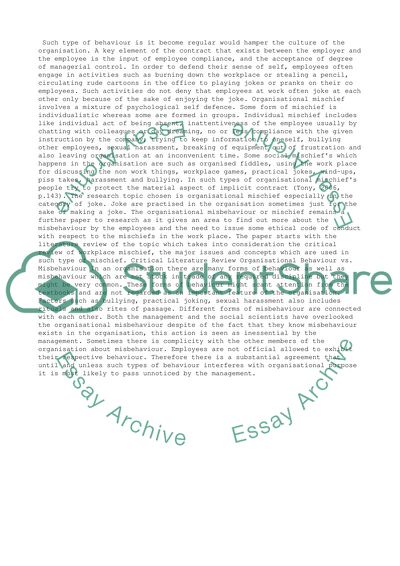Cite this document
(“Organisational Mischief. Organisational Behaviour vs. Misbehaviour Literature review”, n.d.)
Retrieved from https://studentshare.org/management/1394509-organisational-mischief-organisational-behaviour-vs-misbehaviour
Retrieved from https://studentshare.org/management/1394509-organisational-mischief-organisational-behaviour-vs-misbehaviour
(Organisational Mischief. Organisational Behaviour Vs. Misbehaviour Literature Review)
https://studentshare.org/management/1394509-organisational-mischief-organisational-behaviour-vs-misbehaviour.
https://studentshare.org/management/1394509-organisational-mischief-organisational-behaviour-vs-misbehaviour.
“Organisational Mischief. Organisational Behaviour Vs. Misbehaviour Literature Review”, n.d. https://studentshare.org/management/1394509-organisational-mischief-organisational-behaviour-vs-misbehaviour.


